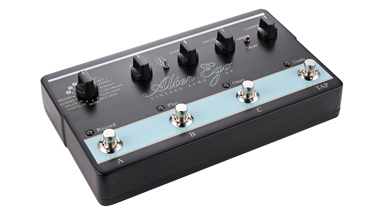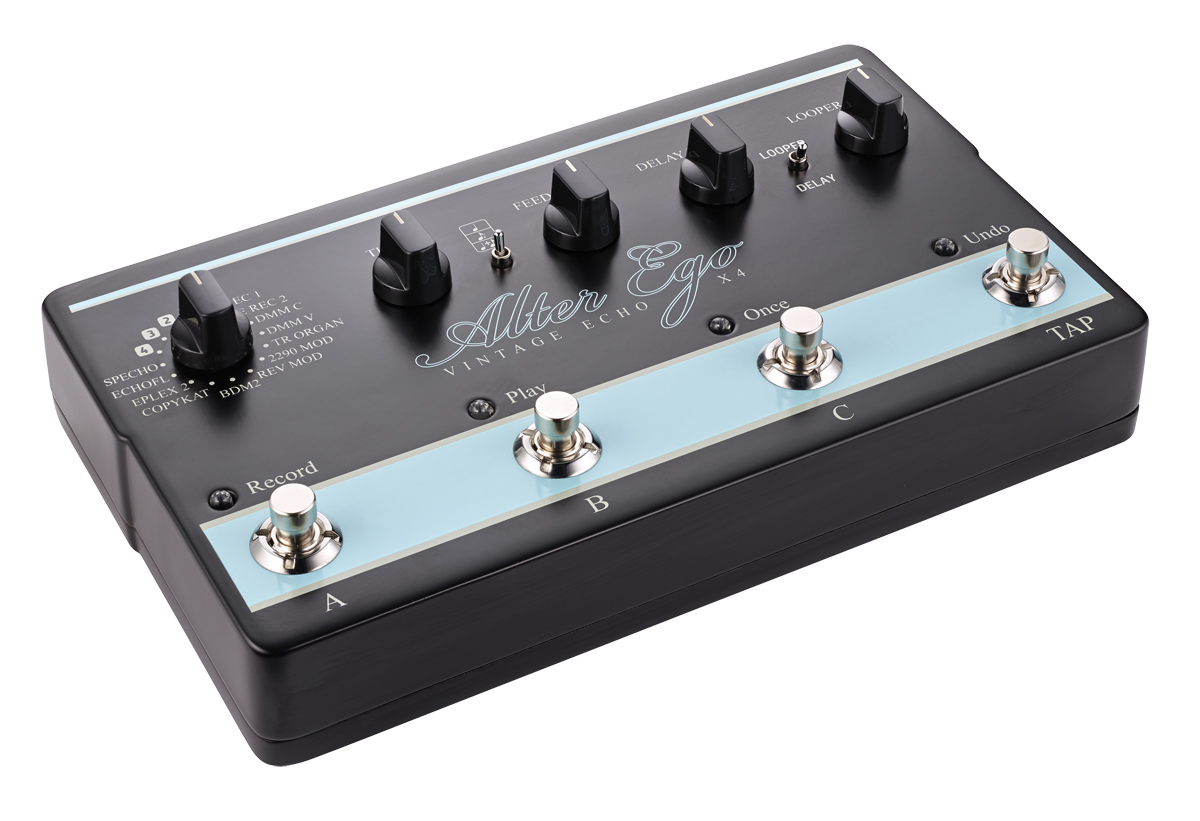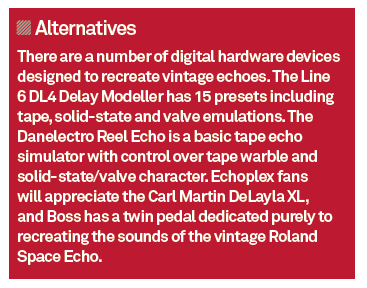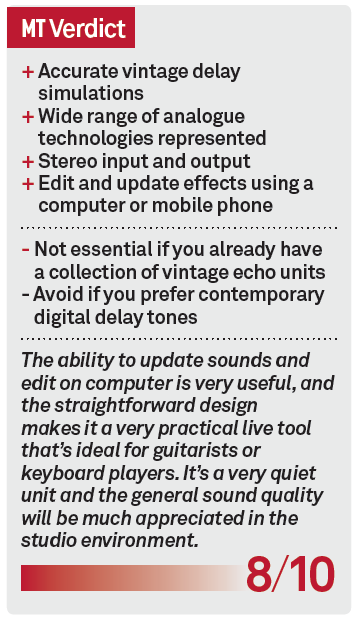TC Electronic Alter Ego X4 Review
Guitarists – they just love a stompbox, don’t they? Marcus Leadley pokes around a delay emulator that even hardcore vintage enthusiasts may like… Details Price £199 Contact – 0800 917 8926 Web – www.tcelectronic.com Amazon.co.uk Widgets TC Electronic is very good at reinventing hardware for the tech-savvy musician. Take the pedal format that remains a practical […]

Guitarists – they just love a stompbox, don’t they? Marcus Leadley pokes around a delay emulator that even hardcore vintage enthusiasts may like…

Details
Price £199
Contact – 0800 917 8926
Web – www.tcelectronic.com
TC Electronic is very good at reinventing hardware for the tech-savvy musician. Take the pedal format that remains a practical option for the performer: ensure the sound quality and connectivity are good enough for studio applications and add the capacity to interface with computers and mobile devices for editing and updating.
The Alter Ego X4 takes the basic format of the Flashback X4 and reinvents it as a dedicated vintage simulator. However, why would anyone want to obsess over the foibles of some old analogue echo units? Musicians and producers have been using delay for over 60 years and each of the different eras of technology has its own unique sound. It’s the tone and character of the repeat that counts: warm and fat or grainy and lo-fi.
Whatever the case, there is always a certain degradation of the signal over time, and the progressive loss of top end creates a beautiful moving filter effect that can add a tangible sense of distance. If you want to emulate classic-era guitar and keyboard sounds then analogue delay is often an essential part of the vibe. So, either you can start collecting bulky vintage units that need regular maintenance or you buy a device such as the Alter Ego X4.

The unit features 12 vintage delay models. Tape-based systems are represented by Roland, Watkins, Binson and Maestro; Electro-Harmonix and Boss cover the solid-state territory. The Tel Ray Organ Tone, an eccentric device that relies upon a spinning canister of conductive oil, is also modelled.
Different models are selected using the left-hand rotary control and there are four additional locations for TonePrints of your choice – more on this later. There are four switches: three presets for each model and a dedicated Tap Temp button. There are Time, Feedback and Delay Level knobs – these are the default settings and you can reassign them to a wide variety of other parameters using the TonePrint Editor software. In a similar way you can assign different parameters to the control of an external expression pedal.

A mini-toggle switch lets you select either quarter note or dotted eighth note repeats, or both at the same time. The unit is MIDI enabled so program change messages can be used to switch between delay models, and a MIDI clock signal can control the delay time. The pedal also features a Looper function. You can layer sound using delays and there’s an undo option. However, you’re limited to 40 seconds of recording time and you can’t save loops, so it has a limited range of performance-oriented applications.
Vintage Up-Cycling
The Alter Ego sounds very good. The differences between the hi-fi quality of the Space Echo model and the faster tone roll-off of the Copycat really nails the different characters of the two units. The softer, vintage tone of the Echoplex works extremely well for rockabilly, and the Binson models warble to great effect. The more contemporary Memory Man patches deliver authentic vibrato and chorus as well as longer echoes.
Some aspects of peripheral functionality are missing, though: while the DM-2 patch sounds like the classic Boss pedal, the controls interact differently and you can’t ‘play’ the feedback to the same extent. And you can’t use the Alter Ego Copycat as a preamp. The flip-side is that the Alter Ego’s models can deliver longer delay times than the originals and multiple delays can work in stereo.
Connecting the Alter Ego X4 to a computer increases its power exponentially.

The TonePrint Editor’s Library function is great fun. This links you directly to the TC Electronic website where you can browse TonePrints – mostly famous player signature settings – and load the patches direct to the pedal’s TonePrint slots. Guitarists can also do this with any smartphone and the TonePrint app: patches are ‘beamed’ to the pedal by holding the phone over the guitar’s pickups.
Returning to the software editor, this lets you fine-tune parameters, change knob assignments and then download changes to the pedal. However, you have to start with a template because the software doesn’t read directly from the unit.
Unfortunately the templates do not seem to have been updated yet to account for the Alter Ego’s models, so they currently relate to the Flashback X4. All is not lost, however, as you can still manipulate and add them to the TonePrint slots to extend the overall sonic potential.
The TC Electronic Alter Ego X4 is an excellent sounding contemporary solution for aficionados of classic delay sounds. As a flexible stereo unit it enables you to manipulate retro tones in new ways.




